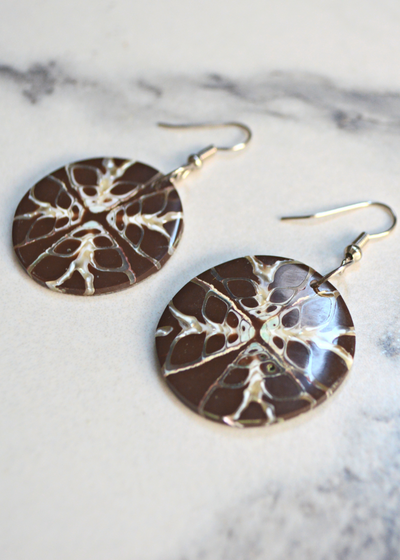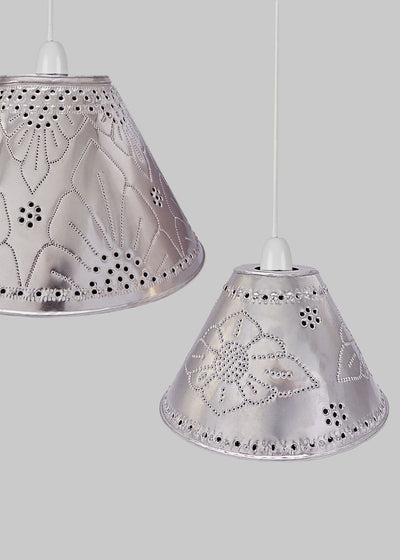What Is Dashain Festival In Nepal
We sat down with our wonderful Elefairy Kishna to talk all about Dashain.
After years of celebrating Dashain in Nepal, Kishna and her family moved to the UK and continue the beautiful festive tradition here.
Kishna shares the festivals traditions and how she celebrates it with her family today.
What Is Dashain
Dashain Baḍadasai बडादशैँ), also known as Vijaya Dashami, is the longest Hindu festival celebrated in Nepal, India and elsewhere all over the world.
This is the longest Hindu festival in Nepal, traditionally celebrated for two weeks honouring the Goddess Durga with prayers and offerings.
Also known as the great harvest festival, Dashain is a cherished time for family gatherings, exchange of gifts and blessings, and beautiful elaborate pujas (rituals).
It's a grand and favourite festival for all age groups of people and presents the opportunity to reunite with family members they haven’t seen in a long time in celebration of great joy, delight, entertainment, and rapture for all.
During the festival period, all government offices, educational institutions, and other offices remain closed.
When Is Dashain
Dashain is celebrated for 15 days altogether. You can find out more about how each of the days are celebrated at the bottom of this post.
Like other festivals, it is based on the lunar calendar starting from the new moon day (Ghatasthapana) to the full moon day (KojagratPurnima), falling in the months of Aswin or Kartik (Nepali date) and the English period between September to October.
This year in 2021, the first day of Dashain Festival falls on 7th October and ends 19th October.
The festival is during the rice harvesting time with the great view of rice terraces of paddy fields.
Dashain Significations
According to Hindu mythology, the Dashain festival is a way of acknowledging the victory of good over evil.
The festival came to light when Goddess Durga won a fight against an evil-spirited demon named “Mahisasur” who spread horror and terror.
The Goddess Durga killed this demon in a war that lasted for multiple days. Her win over the devil also signifies that evil cannot win, and it always comes to cease.
Dashain is considered to be the ceremony of reunion, presenting the opportunity of togetherness, unity and sharing happiness among family members and friends.
During the Dashain festival, people worship the image of the Goddess in their houses in the hope of getting blessings.
How Dashain Is Celebrated
There are many traditions that are present throughout the length and celebration of Dashain. This involves a wide variety of rituals and activities which have been explained in greater detail below.
Dashain Tika
One of the beautiful rituals performed during Dashain is that of tika.
People gather at the house of the eldest family member who gives blessings in the form of tika. This is a dab of red vermilion mixed with yogurt and rice placed on the forehead as a symbol of the blood that ties the family together forever.
It is common for those living abroad to return to their hometown where the eldest family member resides.
Dashain’s tika is believed to have immense power and helps to overcome hardship and struggle in life as well as increasing the love and affections among people.
Most of the homes are cleaned and decorated ornately as a gesture to the Hindu “mother goddess” to come back down and bless the house with sensible luck.
Tika and Jamara are what you’d traditionally see in everyones houses and it eventually somehow became tradition to give money too.
Kishna explains that normally her and her family would try to go to Nepal at this time to receive blessings from her Grandmother who is the oldest family member, but as it’s not always possible, blessings are given by her Father here in the UK.

Playing Cards
Playing cards has also become a trend or tradition as a form of enjoyment during Dashain.
People play cards with family and friends in the weeks leading up to the festival which is often enjoyable.
Kishna plays sometimes - not too often as she claims to not be too good at it, but does enjoy when she has a play.
On the day, the women are usually preparing the food and decorating the house in the villages, so it's usually the men who play cards at this time.
Dashain Bamboo Swing
During Dashain, people construct bamboo swings in different places of the county for enjoyment during the festival. This is almost seen as a main attraction during Dashain, especially in the villages, and is rebuilt every single year.
Local people of the village construct the swing with the locally available materials. Additionally, they use ropes, tough grass, huge bamboo sticks, and wood.
Generally, people construct the swings on the 1st day of Dashain (Ghtashthpana) and take it down only after Tihar.
People of all ages play on these high swings throughout Dashain and you will see them throughout the villages of Nepal. It is extremely fun, and is an opportunity for people within the communities to play and forget any struggles or pain, and instead focus on enjoyment.
This ritual manifests the tradition, local culture, community, and spirit of having fun during the festivals.

Dashain Food
Delicious food is experienced throughout the 15 days of the festival. Large feasts are organised and close ones are invited to enjoy the food and celebration of Dashain.
People cook savory food during the entire festival, with meat being the main food component for meals.
For vegetarian’s people mainly prepare food with paneer, milk, yogurt and ghee.
Sel roti is a very popular food you’ll see throughout the festival. It is almost like a round, spiky textured doughnut, which is made from rice flour and is deep fried with ghee and sugar.
Rice pudding is also popular along with Indian sweets. The sweets however are a more modern thing Kishna explains, as you wouldn’t really see these in the villages.
It is common to take fruits or other gifts to each other’s house when receiving tika.
Dashain Kites
During the festival period, it is common to see highly decorative kites flying up in the sky.
Flying kites has become a tradition and according to ancient people, it is a way to remind God not to send rain anymore.
People fly kites, also named “Changa”, from their rooftop and play to compete with each other. Whenever kite strings get tangled or one person cuts the kite of another person, players chant “Changa Chet”.
It is extremely popular with children as they find huge enjoyment from this.
Dashain Clothes
One of the exciting things about Dashain is buying and wearing new clothes.
People buy new clothes for their family and dress beautifully in elegant clothing, especially when receiving tika.
As buying clothes is popular during Dashain, there are many sales. If you want to buy new things, then Dashain is the perfect time due to huge discounts, bonuses, lucky draws, and gift hampers right before the festival begins.
Dashain Music
During Dashain people play the special music called Malshree dhun.
This is one of the oldest pieces of music in Nepal.
In earlier times people of only the Newari community used to play this music during Jatra. But in today’s world, Malshree dhun has become a ritual for celebrating Dashain.
Dashain Festival Schedule
Around this time, Kathmandu’s population is reduced greatly as the majority of people head home to various parts of the country.
Extended families gather together and celebrate with the feast prepared at the house. Overall, it is a perfect time for families who have not seen each other for months to reconnect once again.
Children particularly love this festival as they get close to 30 days of vacation. There is also a public holiday for all offices and colleges etc.
Among the fifteen days on which Dashain is celebrated, the most important days are the first, seventh, eighth, ninth, tenth, and fifteenth.
Below are more details about how the essential days of the festival are celebrated:
Ghatasthapana (Day 1):
This is the first day of the festival and is called the day of sewing Jamara. On this day, a Kalash that symbolises the Goddess Durga is kept and filled with clean, holy water collected from a sacred pond or river. A rectangular sandy area is prepared, and the Kalash is kept at the centre by the devotees.
Ghatasthapana ritual performs at an exact auspicious moment determined by the astrologers.
At that exact moment, the priest intones a welcome, requesting the Hindu Deity to bless the vessel together with her presence.
Around the Kalash, barley seeds are sewn in the sandy area, which is believed to be pure and blessed.
There is great worship at Dashain Grah, which is the place where all rituals of Gatasthapana are done and worshipped throughout the festival period.
Whilst sewing the seeds, it’s important that the area cannot be affected by direct sunlight.
The Kalash is worshipped for nine days and watered regularly in the sewn area. The seed will grow up to almost 6/5 inches and is of a yellow colour at the end of the ninth day and is called Jamara.
Phulpati (Day 7)
It is on this day that the festival truly starts to begin, as people have most likely already arrived in their hometown by this day.
The Brahmins from Gorkha bring out the Royal Kalash, Banana stalks, Jamara, and sugarcane tied with the red fabric.
To celebrate the arrival of Phulpati, the Nepalese army fire their weapons for fifteen minutes.
Maha Aasthami (Day 8)
MahaAasthami is celebrated on the 8th day of the Dashain festival.
The folks worship the fiercest manifestation of god Durga; bloodthirsty Kali on this day.
The Newar community held a feast called “KuchiBhoe”. Therefore in this festival people are eating two paths of beaten rice along with Bhutan, bara (beancake), cholla. Tori ko saag, aalo ko achar, (potato pickle) bhatmaas also (soybean) Aduwa, (spiced ginger) body (blacked- eyes peas). As well as in a banana leaf including Aila (liquor) and the (Newari alcohol).
Bijaya Dashami (Vijayadashami/Day 10)
The most important and significant day in the Dashain festival is BijayaDashami, which is on the 10th day.
During this day, everyone dresses up in new elegant dresses and receives tika and blessings from the elders.
During Dashain, people with their families visit their elders to seek tika and Jamara, which was planted on the first day.
The women prepare the tika, and the elders also give the younger ones Dakshina (money) and blessings to be the best version of themselves and for their better future.
Kojagrata Purnima (Day 15)
KojagrataPurnima is the final day of the Dashain and it is the full moon day, which marks the ending of the Dashain festival.
At present, Laxmi, the God of wealth and luck, can come back to earth and bless those who did not sleep all night.



